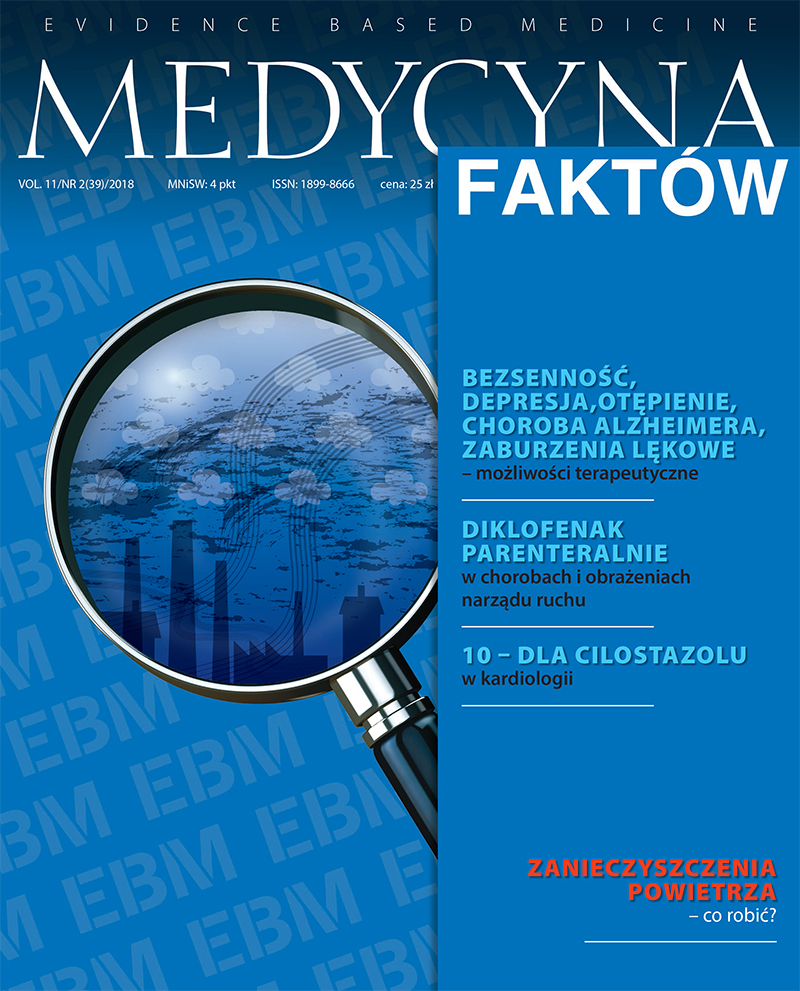Rola podłoża w lecznictwie dermatologicznym Artykuł przeglądowy
##plugins.themes.bootstrap3.article.main##
Abstrakt
Leczenie miejscowe odgrywa istotną rolę w dermatologii ze względu na zaletę bezpośredniego dostępu zmian skórnych, a także ograniczone działania niepożądane i nieznaczne efekty ogólnoustrojowe leków stosowanych tą drogą. Działanie preparatów miejscowych zależy nie tylko od substancji czynnej, ale w dużym stopniu również od rodzaju użytego podłoża. Biorąc pod uwagę charakterystyczne właściwości podłoża, przy jego wyborze należy uwzględnić rodzaj i lokalizację zmian skórnych, ostrość procesu zapalnego oraz oczekiwany efekt kliniczny. Ponadto rodzaj nośnika wpływa na szybkość wchłaniania leku, siłę działania substancji aktywnej, a także akceptację przez pacjenta formy terapii i jego współpracę w procesie leczenia. Na rynku farmaceutycznym wciąż pojawiają się nowe preparaty łączące właściwości różnych typów nośników. Wyzwaniem jest obecnie tworzenie podłoży, które zapewnią jak największą skuteczność terapii przy jednocześnie akceptowalnych właściwościach kosmetycznych. Ostateczny efekt terapii zależy bowiem w dużej mierze od przestrzegania przez pacjentów zaleceń lekarskich i ich współpracy w procesie leczenia.
##plugins.themes.bootstrap3.article.details##
Copyright © by Medical Education. All rights reserved.
Bibliografia
2. Griffiths C., Barker J., Bleiker T. et al.: Rook’s Textbook of Dermatology. Wiley Blackwell 2016; 1: 18.1-18.8.
3. Weller R., Hunter J., Savin J. et al.: Clinical Dermatology. Blackwell Publishing 2009: 364-370.
4. Singh Malik D., Mital N., Kaur G.: Topical drug delivery systems: a patent review. Exp. Opin. Ther. Pat. 2016; 26(2): 213-228.
5. Gabard B., Elsner P., Surber C., Treffel P.: Dermatopharmacology of topical preparations. Springer, New York 2000: 5-21.
6. Weiss S.C.: Conventional topical delivery systems. Dermatol. Ther. 2011; 24: 471-476.
7. Reich K., Newley A.: What is new in topical therapy for psoriasis? J. Eur. Acad. Dermatol. Venereol. 2011; 25: 15-20.
8. Surber C., Smith E.W.: The mystical effects of dermatological vehicles. Dermatology 2005; 210: 157-168.
9. Wohlrab J.: Topical preparations and their use in dermatology. J. Dtsch Dermatol. Ges. 2016; 1061-1070.
10. Rosen J., Landriscina A., Friedman A.: Principles and approaches for optimizing therapy with unique topical vehicles. J. Drug. Dermatol. 2014; 13: 1431-1435.
11. Jaworek A.K., Wojas-Pelc A.: Znaczenie miejscowych glikokortykosteroidów we współczesnym lecznictwie dermatologicznym. Cz. 1. Farmacja Współczesna 2017; 10: 91-99.
12. Berg M., Svensson A., Faergemann J.: A novel formulation of mometasone furoate in psoriasis patients: a multicenter, randomized, double-blind clinical Study. Adv. Ther. 2013; 30: 503-516.
13. Carroll C.L., Feldman S.R., Camacho F.T., Balkrishnan R.: Better medication adherence results in greater improvement in severity of psoriasis. Br. J. Dermatol. 2004; 151: 895-897.
14. Ahn C.S., Culp L., Huang W.W. et al.: Adherence in dermatology. J. Derma tol. Treat. 2017; 28(2): 94-103.
15. Bewley A., Page B.: Maximizing patient adherence for optimal outcomes in psoriasis. J. Eur. Acad. Dermatol. Venereol. 2011; 25(supl. 4): 9-14.
16. Fouere S., Adjadj L., Pawuin H.: How patients experience psoriasis: results from a European survey. J. Eur. Acad. Dermatol. Venereol 2005; 19(supl. 3): 2-6.
17. Zschocke I., Mrowietz U., Karakasili E, Reich K.: Non-adherence and measures to improve adherence in the topical treatment of psoriasis. J. Eur. Acad. Dermatol. Venereol. 2014; 28(supl. 2): 4-9.
18. Iversen L., Jakobsen H.B.: Patient preferences for topical psoriasis treatments are diverse and difficult to predict. Dermatol. Ther. 2016; 6: 273-285.
19. Reszke R., Szepietowski J.: Specjalistyczne podłoża dermatologiczne w terapii skojarzonej przewlekłych dermatoz. Forum Dermatol. 2016; 2: 97-101.
